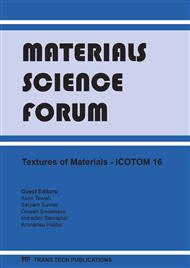p.818
p.822
p.826
p.830
p.834
p.838
p.842
p.846
p.850
Influence of Temperature upon the Texture Evolution and Mechanical Behaviour of Zircaloy-4
Abstract:
The mechanical behaviour and texture evolution during uniaxial compression of Zircaloy-4 at different temperatures (25, 300, 500 C) has been studied. At room temperature and 300 C the texture evolution and strain-hardening behaviour observed are attributed to the activation of {10-12} tensile twinning, which can be identified in optical micrographs and electron backscatter diffraction (EBSD) data. The influence of twinning upon the texture evolution and hardening rate becomes less apparent with increasing temperature. Nevertheless twinning is still active at 500 C. Simulation of the texture evolution at 500 C using crystal plasticity finite element modelling (CPFEM) indicates that slip alone cannot explain the experimentally observed textures at this temperature.
Info:
Periodical:
Pages:
834-837
Citation:
Online since:
December 2011
Authors:
Keywords:
Price:
Сopyright:
© 2012 Trans Tech Publications Ltd. All Rights Reserved
Share:
Citation:


